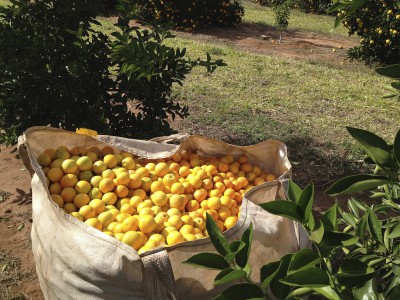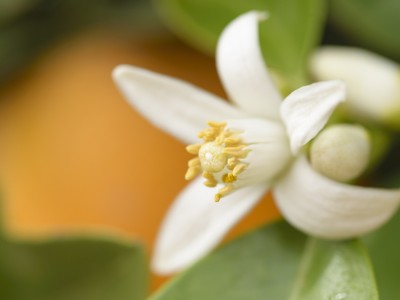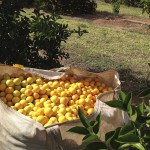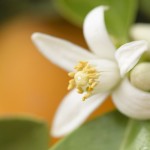Product: Orange Oil CP
Orange Oil CP Brazil Citrus sinensis
-
Description
Orange oil is extracted by simple pressure from the outer coloured part of the Citrus sinensis' peel. Oranges are widely cultivated in tropical and subtropical climates for the sweet fruit and commercially for essential oil extraction.
Orange oil is a by-product of the juice industry. Oil is cold pressed from the peel of the fruit, after juice extraction and is widely used across the flavour and fragrance industry. Sweet orange (citrus sinensis) is around 90% d’limonene, a product used across many more industries. Approximately 40% of global oranges are processed for juice and oil with 60% solely used as a fresh fruit for consumption.
Brazil has the largest production of fresh oranges and also it processes more orange than any other country making it the largest producer of orange oil and d’limonene (orange terpenes) in the world. Harvesting can be almost 12 months of the year due to the widespread distribution of plantations, however it is unusual for any significant production during February – April. Therefore we usually consider May - December as a typical harvesting period.
Brazilian oranges make up for around 34% of the world market – approximately 17 million tons+/- from a global estimate of 50 million tons +/- of fresh fruit. The Brazilian state of São Paulo contributes around 80% of the country’s production figures.
It's been a challenging time of late for the world's largest producing country and they're forecasting a sharp reduction of 18.3% in the total 2016/17 crop. To read more about today's conditions click here.
You may have recently read in our Market reports details of the challenges faced by the industry due to Citrus Greening. Click here for more details of the global impact of this wide spreading disease.

-
Product Details
- Botanical name: Citrus sinensis
- Origin: Brazil
- Crop Season: July - December
- Plant/part used: Peel
- Method of extraction: Cold pressed
- TSCA CAS: 8008-57-9
- EINECS CAS: 8028-48-6
- EINECS: 232-433-8
- INCI Name: Citrus aurantium dulcis (Orange) oil
- Appearance: Yellow orange to deep orange mobile liquid
- Organoleptic Properties: Orange fresh juicy sweet
- Density: 0.840 - 0.848
- Refractive index: 1.470 - 1.476
- Optical rotation: +94º to +100º
- Chemical constituents: Limonene, Myrcene, Pinene, Linalool
- Fragrance usage: max. 10%
- Flavour usage: max. 4200ppm
- IFRA: Restricted by IFRA
- Allergens: Contains fragrance allergens
- REACH: Registered
-
Latest Market Information January 23, 2024
The updated Fundecitrus forecast for the 2023–2024 orange crop in Brazil’s citrus belt is 307.22 million boxes (M. boxes) of 40.8 kilograms each. That is a reduction of 2.12 M.
boxes, or 0.7%, from the September forecast of 309.34 M. boxes.
The forecast, by varieties, is:• Hamlin, Westin and Rubi: 58.09 M. boxes (unchanged)
• Other early season: 18.51 M. boxes (unchanged)
• Pera Rio: 97.62 M. boxes (increased 1%)
• Valencia and Valencia Folha Murcha: 105.20 M. boxes (decreased 0.03%)
• Natal: 27.8 M. boxes (decreased 9.8%)According to the current forecast update, the fruits will weigh less than the average of the last 10 years, which is 163 grams. One factor contributing to oranges not reaching their projected sizes is the persistent below-average rainfall.
Another impactful factor is the accelerated pace at which harvesting progresses, leading to a shorter period for fruit development. According to the Centre for Advanced Studies on Applied Economics (CEPEA), a new heat wave in Brazil’s São Paulo state has been concerning citrus growers. Temperatures are higher than those registered in the last wave in September and are lasting longer. Faster harvesting is emerging as a strategy to reduce the fruit drop rate, which has been projected down from 21% to 19%, considering all varieties.
Many producers say that this hot weather may also affect 2024–2025 production, but it is still too early to estimate possible impacts.
Citrus greening is also affecting the growth of the oranges. Brazil estimated in 2023 that it had 202.88 million citrus trees, largely the result of massive replanting efforts. In 2016–2017, there was much new planting in the southern region of Brazil. Those plantings were made in an effort to outrun citrus greening that was spreading in other parts of Brazil.
Citrus greening continues to be a problem in those new production regions. It is estimated that citrus greening affects 38.06% of orange trees in the states of São Paulo and Minas Gerais and productivity in Brazil’s São Paulo and Minas Gerais citrus belt will be reduced by 12% in the next five years.Market prices : USD 12 - 14.00 /kilo -
Product Enquiry
To ask us a fair quote for this product, please fill the following form:
-
Documents & Links
 Ultra International B.V.
Ultra International B.V.



